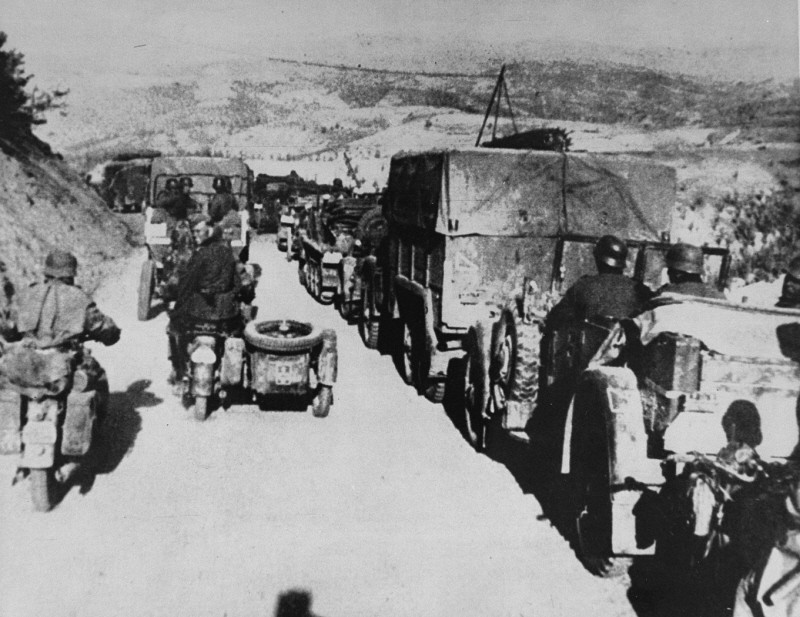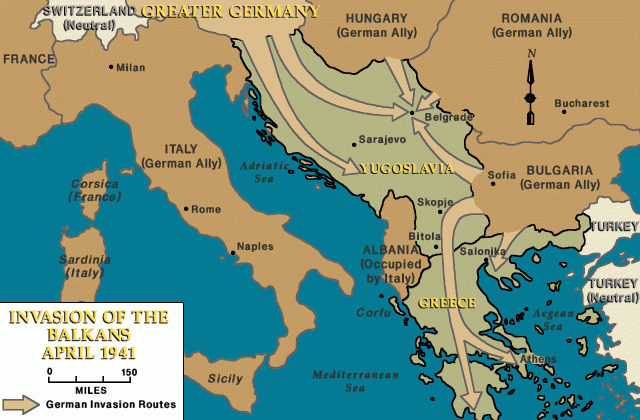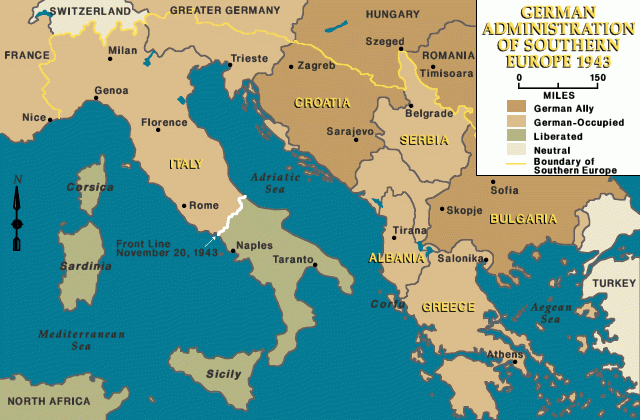
Balkan Campaign, Spring 1941
Background
Yugoslavia was a member of the Axis alliance with Germany. However, in late March 1941, the Yugoslav government was toppled by an anti-German military coup. In addition, an attack on Greece by Italy (Germany's ally) in October 1940 was turned back. A Greek counterattack threatened Italian positions in the Balkans. Germany then decided to intervene in the Balkans in order to secure a southeastern flank for military operations against the Soviet Union.
Invasion

Germany invaded the Balkan countries of Yugoslavia and Greece in early April 1941. Supported by contingents from Germany's allies (Italy, Bulgaria, Hungary, and Romania), German forces quickly subdued the Balkans. British forces, sent to aid Greece, were forced to withdraw to the island of Crete. In mid-May, German paratroopers landed on Crete and, after heavy fighting, defeated British forces.
Occupation and Administration
Yugoslavia and Greece were partitioned among the Axis allies. Germany annexed most of Slovenia, and occupied the northeastern Vojvodina region, northwestern Yugoslavia, Serbia, and the region around Salonika in northern Greece. Germany also established the pro-German, fascist state of Croatia in northern Yugoslavia. Hungary received Backa, the region around Subotica in northern Yugoslavia. Bulgaria annexed Yugoslav Macedonia (the area between the cities of Skopje and Bitola in southern Yugoslavia) and most of Thrace, in northern Greece. Germany occupied a small area of Thrace bordering neutral Turkey. Italy occupied the coastal areas of Yugoslavia and most of the rest of Greece. Germany and Italy jointly occupied Athens, the Greek capital.

Critical Thinking Questions
- How did the course of the war in the Balkans affect the implementation of the “Final Solution” by the Nazis and their collaborators?

